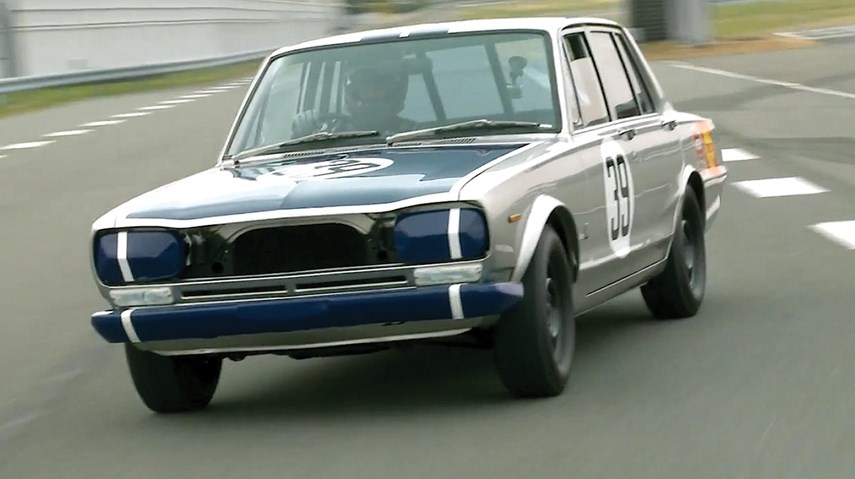A biweekly roundup of automotive news, good, bad and just plain weird:
Nissan celebrates 50 years of performance
With the New York International Auto Show opening in just a couple of weeks, the first details of what manufacturers intend to reveal are starting to trickle out. For Nissan, rather than some autonomous crossover or electrified runabout, it’s going to be a glimpse over their shoulder.
Touted as their Dream Garage, Nissan is choosing to celebrate 50 years of both their Z cars and the mighty Skyline GT-R with a heritage display that mirrors the past with the present. The 240Z didn’t officially arrive in North America until the 1970 model year, but both it and the GT-R are a half-century old, and that calls for a proper birthday cake.
Nissan is spreading the icing on its cake with an original 240Z, a late-80s R32 GT-R in Calsonic racing livery, a rare 1973 GT-R, and a last-of-breed R34 GT-R. All four sit above their modern equivalents, which are painted in livery to match.
But both the modern Z and GT-R are getting really long in the tooth themselves. We’ve had a decade of these two models with only minor tweaks, as Nissan has pivoted to mainstream family haulers. It’s all well and good for Nissan to pay tribute to its performance past, but when are we going to get a glimpse of the performance future?
Ford launches calming dash display
Ever wonder if we’re being over-stimulated with useless information coming from our dashboards? If you’re driving to and from work in slow-moving traffic, you might scratch your head over the actual usefulness of a tachometer or G-meter or the host of other data that pops up on your screen.
Ford figures some people are looking to just stick to the basics, so has come up with their Calm Screen technology. Shining in a soft blue light, the screen shows only current speed, and a handful of other information, like gear selection and outside temperature.
It’s a neat idea, and a worthy alternative to instrument displays that turn bright red when you put them in their sportiest mode. Who needs that? A little more calm behind the wheel would make the commute just that much more bearable.
Ford GT hits 480 km/h in standing mile
Everything really is bigger in Texas. Case in point: Texas mile racing, where a car sets off from a standing start and reaches some truly eye-watering speeds.
Now, a new street-legal record has been set by a previous generation Ford GT. The car has been reworked with twin-turbocharging for its 5.4-litre V-8, with some 45 PSI of boost pushing the output to over 2,500 horsepower. No one has any idea how much power this thing is actually putting down, as the dyno just threw up its hands, unable to measure anything this powerful.
Fitted with an old-school six-speed manual transmission, the GT sprinted off the blocks and into the record books, cresting 482 kilometres per hour (300 miles per hour), which is absolutely bonkers. For comparison, this is 30 km/h higher than the official production car top speed, currently held by the Swedish-made Koenigsegg Agera RS.
Europe moves to limit speed of all cars
Even as North American tuners nudge the top speed bar ever higher, European regulators are looking to clamp down on vehicle speeds. It would appear that Volvo’s recent decision to limit their vehicles to 180 km/h in the next couple of years was merely getting headlines ahead of the curve, as Europe’s transport authority is calling for mandatory speed limiters to be installed on all cars in the next three years.
These speed limiters will use GPS data and road sign-reading technology to limit engine power so that a car can’t physically break the limit. In an emergency situation, the driver can override the system temporarily by fully pressing the throttle, but more than a few seconds of hard acceleration and a warning will sound inside the vehicle.
Naturally, not everyone’s happy about having an electronic nanny installed in their car, especially as the technology will incorporate data-logging. The council claims that the tech will reduce collisions and fatalities by the thousands.
While most people would likely agree that huge top speeds are pretty irrelevant on today’s roads, the idea of having your car speed-limited and tracked by some European bureaucrat is not the kind of thing that fills you with hope. Further, it’s also a bit irrelevant, especially for North American drivers, where mandatory automated emergency braking systems and seatbelt interlocks would be a far more effective way to reduce injuries.
Still, there it is, a glimpse of perhaps the end of crazily fast cars available to the public on the horizon. For those of you who might be lamenting the loss, remember that some of the best cars available aren’t about the speeds on the straights, but about the corners in between.
Watch this space for all the week’s best and worst of automotive news, or submit your own auto oddities to [email protected].



